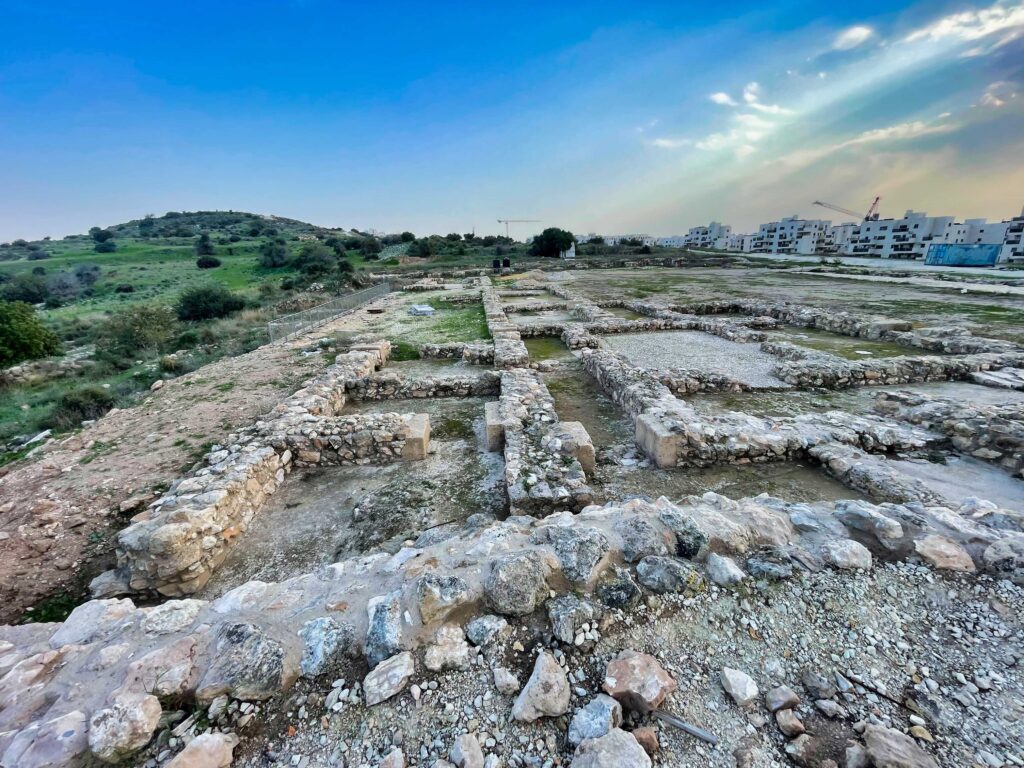Location
Tel Jarmuth is situated in the central Shephelah, approximately 25 km southwest of Jerusalem. It extends over a natural hill overlooking Nahal Yarmut.

Identification
The site is generally accepted as the biblical Jarmuth, mentioned in Joshua’s conquest and later as a city in Judah. It’s also identified with a Byzantine village mentioned by Eusebius.
History
Tel Jarmuth was first settled in the second half of the fourth millennium BCE (Early Bronze Age I) and was continuously occupied until about 2300 BCE (end of Early Bronze Age IIIB). It was reoccupied in the Late Bronze Age II and remained inhabited until the Early Byzantine period.
Excavations
Initial excavations began in 1970, with further extensive excavations conducted from 1980 onwards. The later excavations, directed by P. de Miroschedji, continued until at least 2006, focusing on both the acropolis and the lower city.
Findings Across Periods
- Early Bronze Age: Featured complex fortifications, urban planning, and significant public constructions. The city had a fortification system with massive stone bastions, earthen glacis, and stone buttresses. A monumental city gate and terrace system were notable.
- Late Bronze Age: The later excavations revealed structures from the Late Bronze Age IIB beneath Iron Age I fill layers. This included a bench for food preparation and “Egyptian” bowls, indicating continued occupation and cultural interactions.
- Iron Age: Remains from the Iron Age (stratum III) were sparse. The foundations of the Persian period ashlar building were constructed directly on the Late Bronze Age brick walls. Earth and rubbish pits from this era suggest that parts of the site were outside the inhabited zone during this period, with remains from Iron Age I and Iron Age IIB.
- Persian and Hellenistic Periods: Under Phoenician rule in the Persian period, the site featured stone foundations and ashlar walls with a fieldstone fill, typical of Phoenician building techniques. The structures, likely storerooms and workshops, showed signs of frequent repair and alteration. An abundance of imported Greek objects, a stone anchor, and coins were found, with evidence extending into the Hellenistic period.
Main Findings
- Fortifications: The fortification system, particularly from the Early Bronze Age II, was further explored. This included a 6.4 m thick wall with inner chambers and huge bastions, as well as a glacis made of earth, stones, and lime plaster.
- Urban Layout: The terrace system was further investigated, suggesting a highly organized urban layout with artificial terraces supporting a series of constructions.
- Palaces: The large construction in area B, identified as an Early Bronze Age III public building, was the focus of recent excavations. Four strata were identified, with palaces B2 and B1 from the Early Bronze Age IIIC being particularly significant. Palace B1, almost square in plan, covers about 6,000 sq m and is the largest building complex known from this period in the Levant.
- Administrative and Official Areas: Palace B1 included an official area with a main entrance, hypostyle hall, and reception hall, as well as an administrative area with storerooms.
- Construction Techniques: The quality of construction in Palace B1 was remarkable, featuring lime-plastered walls and floors, elaborate doorjambs, and a system of channels and cisterns.
Sources
Stern, Ephraim-New Encyclopedia of Archaeological Excavations in the Holy Land 2-Israel Exploration Society (1993 ,2008)


